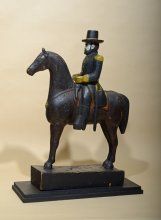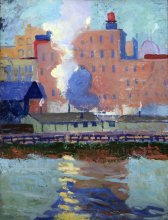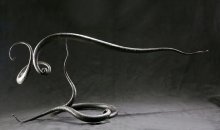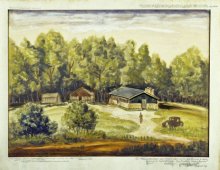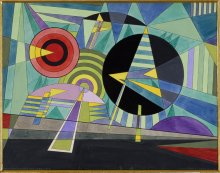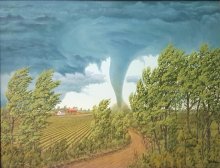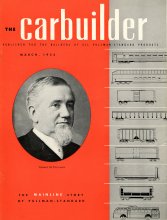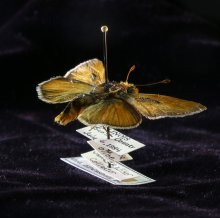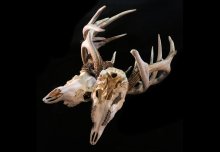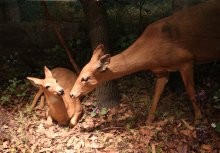Modern Era (1917-present)
The state’s Modern Era has been one of continued growth and change. Following World War I and the nation’s greatest economic collapse, public works projects of the New Deal put people to work on civic projects, such as building roads and infrastructure, and brought history to life by protecting a number of historic places around the state. The Federal Arts Program of the W.P.A. paid artists to create paintings, prints, sculptures, and murals for civic beautification, pride, and capturing the moment. Beginning in 1941, the state’s agricultural and manufacturing sectors and the sacrifices of citizen-soldiers played an important role in making the United States a leader on the world stage.
Frank P. Richards was a farmer living near Rochester, Illinois, who spent his evenings and winters carving. He quit farming and moved to Edinburg, Illinois, and eventually Springfield, Illinois, where he did odd jobs and became known as an inventor.
In 1914, at age 28, Jean Crawford Adams began her training at the Art Institute of Chicago, continued her studies at the Provincetown School of Art in 1920, and finished in the 1920s in Paris. Throughout her career, Adams painted still-life and landscapes, acceptable subjects for a woman artist of her day, but her scenes of Chicago are what memorialize her.
Trained as a silversmith and self-taught as a blacksmith, L. Brent Kington was a distinguished American master who is celebrated for reintroducing the ancient craft of blacksmithing to the modern world of fine art. In 1961, Kington came to Carbondale to lead the metals program at Southern Illinois University, where he offered the first studio iron classes in an academic setting anywhere in the country.
Young college graduates, largely from Northwestern University in Evanston, came to southernmost Illinois in 1933 and established a college just outside of Harrisburg. The College in the Hills was an experimental liberal arts college offering courses in history, economics, sociology, psychology, and art for the surrounding communities. Its mission, as stated in a newspaper announcement, was "to develop students capable of living in a modern world of new social and economic values.
Few abstract paintings are known to exist from this once prolific, German-born artist who immigrated to Chicago in 1926 and lived in Evanston, Illinois, until 1933. In 1934, Penrod Centurion, also known as “Penny Cent,” moved to southern Illinois to teach art at the College in the Hills, an experimental college near Harrisburg. In 1937, he received a stipend award from the Solomon Guggenheim Foundation in New York City for the Museum of Non-Objective Painting.
Illinois' predominately flat landscape leaves us with ample sky to contemplate, making us all forecasters of coming storms. Nothing is more indicative of the powerful and unpredictable forces of weather than tornadoes, a not uncommon sight on our horizons.
The Carbuilder was a publication from Pullman-Standard Company for builders of all Pullman-Standard products.
The prairie has its own suite of grasses and wildflowers that make it a unique ecosystem. With the habitat comes the associated insects, birds, reptiles, and amphibians adapted to this sometimes harsh, sometimes beautiful environment.
The Illinois State Museum was seeking a pair of white-tailed bucks (Odocoileus virginianus) with their antlers locked in combat for a habitat exhibit, when in 1984, two hunters in Pike County happened upon just such a scene. Jerome Martin of Pleasant Hill and Sam Mathews of Riverton encountered these bucks while hunting in the hills near Rockport, an unincorporated town in western Pike County.
White-tailed Deer (Odocoileus virginianus) were once so rare that in the early 1900s, Illinois State Museum curators had to arrange to get specimens from Wisconsin for exhibit. Unregulated shooting, changes in land use and other factors combined to all but eliminate deer from the state by the turn of the last century.
Pages






